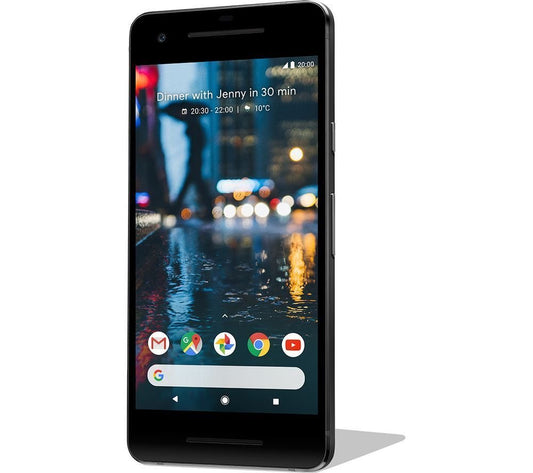In today's digital world, mobile apps are everywhere. They help us with everything from playing games to managing our daily tasks. Among all the mobile platforms, Android stands out because it's used by millions of people around the globe. This guide will help you learn how to make your own Android apps, no matter if you're a beginner or already have some experience. By following these steps, you'll be able to create apps that people will love to use.
Key Takeaways
- Understand the Android ecosystem and its importance in the mobile app world.
- Learn how to set up your development environment with Android Studio and necessary tools.
- Master the core components of Android, like Activities, Services, and Broadcast Receivers.
- Discover how to create user-friendly interfaces using Material Design principles.
- Explore advanced techniques such as working with databases, integrating APIs, and optimizing app performance.
Understanding the Android Ecosystem
In today's digital age, mobile applications are revolutionizing how we interact with technology. Among the plethora of mobile platforms available, Android stands out as the most widely used operating system worldwide. With millions of users and devices running on Android, mastering Android development opens up a world of opportunities for developers and entrepreneurs alike.
The Importance of Market Research
Before diving into Android development, it's crucial to understand the market. Market research helps identify user needs, preferences, and trends. This knowledge can guide the development process, ensuring the app meets user expectations and stands out in a crowded marketplace.
Android Versions and Compatibility
Android's open-source nature means it runs on a wide range of devices, from smartphones to tablets, smartwatches, and even cars. However, this diversity also means developers must ensure their apps are compatible with various Android versions. Keeping up with the latest updates and understanding the differences between versions is essential for creating a seamless user experience.
Target Audience Analysis
Knowing your target audience is key to developing a successful app. Analyze demographics, preferences, and behaviors to tailor your app to your users' needs. This analysis can help in designing features, user interfaces, and marketing strategies that resonate with your audience.
Dive into the world of Android OS architecture with our detailed guide. Explore the layered structure of Android, from the foundational Linux kernel to the application framework, and understand how each layer contributes to the overall functionality and performance of Android devices.
Setting Up Your Development Environment
To start your journey in Android app development, you need to set up your development environment. This involves installing Android Studio, configuring SDKs and virtual devices, and adding essential plugins and tools. Let's break down each step to ensure you have a smooth setup process.
Mastering Core Android Components
Activities and Lifecycle
Activities are the building blocks of any Android app. They represent a single screen with a user interface. Understanding the activity lifecycle is crucial for managing the state of your app. The lifecycle includes stages like onCreate, onStart, onResume, onPause, onStop, and onDestroy. Each stage has a specific purpose and knowing when to use them ensures your app runs smoothly.
Services and Background Tasks
Services allow your app to perform long-running operations in the background. They can run even if the user isn't interacting with your app. There are two types of services: Started and Bound. Started services run until they complete their task, while Bound services run as long as another application component is bound to them. Using services wisely can enhance your app's performance and user experience.
Broadcast Receivers and Content Providers
Broadcast Receivers enable your app to listen for system-wide broadcast announcements, like when the device is charging or connected to Wi-Fi. They help your app respond to events even when it's not running. Content Providers manage access to a structured set of data. They are essential for sharing data between different apps. Understanding these components will make your app more interactive and data-rich.
Mastering these core components is essential for any Android developer. They form the backbone of your app, enabling seamless interaction and data management.
Building User-Friendly Interfaces
Creating user-friendly interfaces is crucial for the success of any Android app. A well-designed interface not only looks good but also ensures that users can navigate the app with ease. This section will cover the principles of Material Design, creating responsive layouts, and handling user input and gestures.
Advanced Android Development Techniques
Working with Databases and Content Providers
When developing complex Android applications, managing data efficiently is crucial. Databases and content providers are essential tools for this purpose. SQLite is the most commonly used database in Android, providing a lightweight and powerful solution for local data storage. Content providers, on the other hand, facilitate data sharing between different applications. Understanding how to implement and optimize these components can significantly enhance your app's performance and user experience.
Integrating Third-Party APIs
Integrating third-party APIs can add a wealth of functionality to your Android app. APIs allow your app to communicate with external services, such as social media platforms, payment gateways, and location-based services. When integrating APIs, it's important to handle network requests efficiently and ensure data security. Using libraries like Retrofit can simplify the process and make your code more maintainable.
Optimizing App Performance
Performance optimization is a critical aspect of advanced Android development. Poor performance can lead to a negative user experience and low app ratings. To optimize your app, focus on reducing memory usage, minimizing battery consumption, and ensuring smooth animations. Tools like Android Profiler can help you identify performance bottlenecks and optimize your code accordingly.
Efficient data management and performance optimization are key to creating high-quality Android applications. By mastering these advanced techniques, you can build apps that are both powerful and user-friendly.
Testing and Debugging Your Android App
Ensuring your Android app is thoroughly tested and debugged is crucial before its release. This process helps in identifying and fixing issues that could affect the app's performance and reliability.
Unit Testing and UI Testing
Unit testing involves testing individual components of your app to ensure they work as expected. Tools like JUnit can be used for automated unit tests. UI testing, on the other hand, focuses on testing the user interface to ensure it behaves correctly. Espresso is a popular tool for automated UI testing in Android.
Using Android Studio Debugging Tools
Android Studio offers a range of debugging tools to help you identify and fix issues in your app. The Logcat tool allows you to view log messages in real-time, making it easier to track down errors. The debugger lets you set breakpoints and inspect variables to understand the app's behavior.
Beta Testing and User Feedback
Before the final release, it's important to conduct beta testing. This involves releasing your app to a small group of users to gather feedback and identify any remaining issues. Platforms like Google Play Console make it easy to manage beta testing and collect user feedback. This step is essential for ensuring your app meets user expectations and performs well in real-world conditions.
Thorough testing and debugging are essential to ensure the quality and reliability of your app. Use a combination of automated and manual testing to cover all aspects of your app's functionality.
Publishing and Marketing Your App
Preparing for Google Play Store Submission
Once your app is polished and thoroughly tested, it's time to publish it on the Google Play Store. Start by creating a Google Play Developer account. Follow the guidelines for app submission, which include providing detailed descriptions, screenshots, and promotional materials. Ensure your app complies with Play Store policies to avoid any delays in the approval process. Choose an appropriate pricing strategy and decide on the distribution methods.
App Store Optimization (ASO)
App Store Optimization (ASO) is crucial for increasing your app's visibility. Focus on creating an eye-catching title, a compelling description, and relevant keywords. Use high-quality screenshots and videos to showcase your app's features. Regularly update your app's metadata to reflect new features and improvements. Monitor your app's performance and make adjustments as needed to improve its ranking.
Marketing Strategies and User Engagement
Effective marketing is key to your app's success. Utilize social media, content marketing, and email campaigns to reach your target audience. Encourage users to leave reviews and ratings, as positive feedback can significantly boost your app's visibility. Engage with your users through regular updates and by addressing their feedback promptly. Consider running promotions or offering discounts to attract new users and retain existing ones.
Remember, the journey doesn't end with the launch. Continuous improvement and user engagement are essential for long-term success.
Conclusion
Mastering Android mobile app development is a journey that combines creativity, technical skills, and continuous learning. This guide has walked you through the essential steps, from understanding the basics to tackling advanced topics. By following these steps, you can create apps that are not only functional but also engaging and user-friendly. Remember, the key to success in app development lies in thorough planning, persistent effort, and a willingness to adapt and grow. As you continue to hone your skills, you'll be well-equipped to bring your innovative ideas to life and make a significant impact in the ever-evolving world of mobile technology.
Frequently Asked Questions
What is Android app development?
Android app development is the process of creating applications for devices that run on the Android operating system. This involves writing code, designing interfaces, and testing the app to ensure it works correctly.
What tools do I need to start developing Android apps?
To start developing Android apps, you need Android Studio, which is the official Integrated Development Environment (IDE) for Android development. You will also need to know Java or Kotlin, the two main programming languages for Android.
How do I test my Android app?
You can test your Android app using the built-in emulator in Android Studio, which simulates different devices and configurations. You can also test your app on actual Android devices to see how it performs in real-world conditions.
What is the importance of Material Design in Android app development?
Material Design is a design language developed by Google that focuses on creating clean, intuitive, and consistent user interfaces. Following Material Design principles helps ensure that your app looks professional and is easy to use.
How can I optimize my Android app's performance?
To optimize your Android app's performance, you should minimize resource usage, reduce battery consumption, and ensure that your app runs smoothly on various devices. Using efficient coding practices and regularly testing your app can help achieve this.
What steps are involved in publishing an Android app to the Google Play Store?
Publishing an Android app to the Google Play Store involves preparing your app for release, creating a developer account, and following Google's guidelines for submission. You'll need to provide detailed descriptions, screenshots, and marketing materials for your app.








